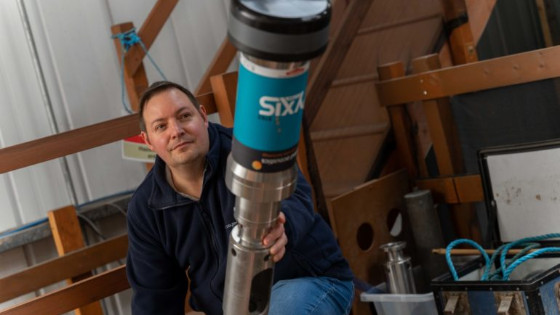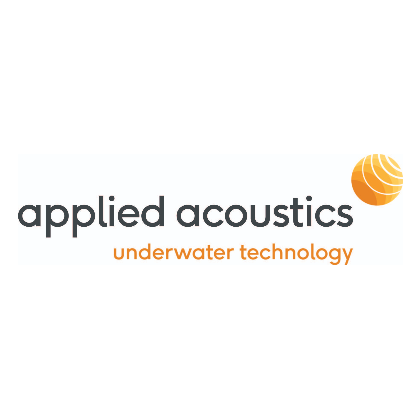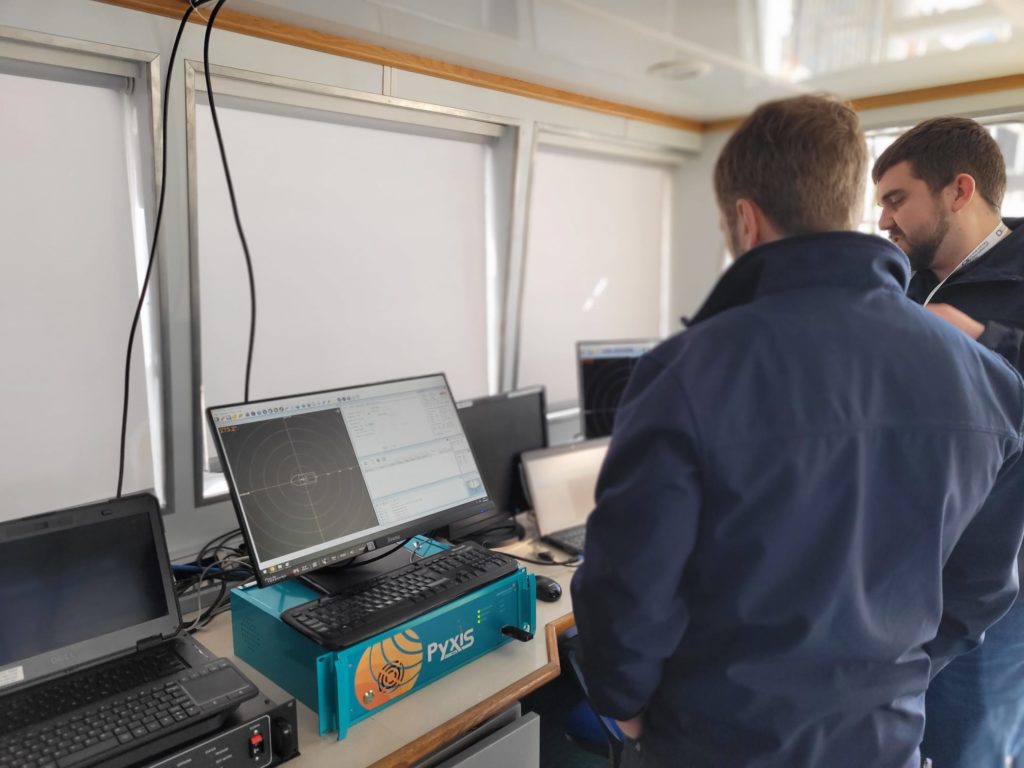

How to Get the Most Out of Your Shallow Water USBL
Mapping the seabed or tracking in shallow water requires a different approach to deep sea projects, especially if you are working in a harbour or close to the coastline. Our acoustic positioning product co-ordinator Ben Darling gives his tips for working with shallow water USBLs.
What is classified as shallow water?
Usually, it’s anywhere where the depth to the seabed is around 300 metres (around 1,000 feet) or less. This is typically close to the coastline, at a quayside or in a harbour structure. A USBL is a method of locating objects subsea using acoustics, and a shallow water environment will mean using some different approaches from scanning in deeper water. A transponder beacon is attached to whatever you’re trying to track and the transceiver will be positioned on the vessel.
There are various types of transponder beacons for various applications – some go on divers or on ROVs, and some sit on a fixed frame on the seabed. Either way, you will be able to accurately position where the frame or beacon is. The data output can then feed into a ship’s DP system, which holds a constant position over a target, or it can be used to follow a moving target.
The position can also be interfaced with standard survey packages to give data from other equipment geographical representation.
Where is best to position the transceiver on a vessel?
Transceivers can be mounted over the side of the vessel on a pole mount, or through the vessel itself via a gate valve or a moon pool.
The most important thing to remember is that they must always be positioned at least a metre below the lowest point of the vessel, but the deeper the better, avoiding any excess vibration on the installation. This is to reduce any reflections that may hit the hull of the vessel and come back to the receiver head and thus get counted as a reply. If this happens, you’ll generate invalid replies and compromise your survey.
So, keep the head away from the bottom of the vessel and any thrusters or direct propeller wash that could go over it and create false replies.
Does tilting your transceiver towards the target help scanning?
For shallow water work, definitely yes. Instead of the transceiver facing down into the ocean, you can tilt it at 30 degrees so that the optimal cone of operation is set up for shallow water work behind the vessel, especially when towing various bits of equipment, side scans, multi beams and other applications.
With a tilted head, you need to ensure you’ve set the settings correctly. But you really need to be careful of the resulting blind spot behind the way it is pointing (which will be towards the front of the vessel, if towing). So you won’t be able to see anything from that direction, because the transceiver doesn’t work on a negative depression angle.
Tilting the head does limit the versatility of the work you can do, but it depends on what the ship is doing. If the ship is always towing something behind it that it wants to track, then it won’t be an issue. And providing the head is deep enough in the water, you won’t have issues with propellor wash.
Assessing your shallow water environment – what to look out for
The speed of sound is the biggest thing to consider in shallow water. If your speed of sound isn’t correctly set, then the readings and results you get back will be inaccurate. It’s essential to have an accurate reading from precise sound velocity probes or another item of equipment.
The speed of sound – the time it takes for sound to travel through a medium – is actually what we are using in order to work out exactly where the target is by measuring the time for an acoustic signal to travel to the target and back.
In a USBL, the receive elements in the heads are very close together, if the speed of sound used is slightly wrong then so will the calculated position. The accuracy will get worse the further the range of the target. In the Nexus and Pyxis systems, we can mitigate this by inputting an accurate sound velocity profile.
When you’re in shallow water, you need to be wary of ‘multi-path’. This is where signals bounce off the seabed or sea surface to come back to the transceiver, but might also bounce off hard surfaces if you’re working in a harbour, or around large structures.
What can help with this?
You can eliminate this by turning down the transmit power or using a lower-powered beacon, and also reducing your receiver sensitivity. These are all adjustable within the USBL software.
This means the signal from the direct path will be strong, but any readings from the multi-path will be a lot weaker because the further it travels, the quieter it will be. And a less sensitive receiver will not pick them up or will do so only faintly. So you get a bet signal-to-noiseless ratio, which is better for tracking in shallow water. Allowing the transceiver to decipher the true reply to the multi-path replies.
Anything else to worry about in terms of the environment?
The only thing to be really concerned about is the speed of sound through the water column, which is affected by pressure, salinity and temperature.
The temperature will obviously change from the top to the bottom – exactly how much will depend on how deep it is. If you’re working somewhere particularly hot, the sea will be fairly warm at the surface, but going deeper the temperature will decrease, level out and become more stable. Either way, you’ll need an accurate temperature measurement in order to build the profile in the system.
Salinity can vary according to how close to the coast you are working, especially if you are close to any areas where a freshwater river is feeding into the sea. If freshwater is affecting the salinity, then your speed of sound will also be affected.
Accurately measuring the speed of sound is best done with a dedicated sound velocity probe and you can then upload the profile to the USBL system. There are temperature sensors inside the USBL console, and you can work out the speed of sound using tables, but there’s nothing better than a dedicated reading on the day.
The only other thing to consider is noise from thrusters and wash from other vessels. Rough seas or rain do not really have any impact. But if the sea is very calm, you can get multi-path readings from a signal bouncing off the flat surface!
When is it best to use Omni-directional or directional beacons?
Directional beacons are generally used for longer ranges or deeper water. They should really only be used when you’ve almost reached the limit of an Omni-directional beacon.
An Omni-directional beacon will give you accurate readings up to around 1,000 metres, depending on exactly which beacon it is, so it’s good for shallow water. A directional beacon really starts to become effective at upwards of 750 metres.
Because the cone of a directional beacon is ±30 degrees, it works perfectly well if it’s directly below the transceiver, but the further away you get, the wider the area it is covering. This will work fine at 500 metres, for example, but you will need to keep targets within that cone the further away you get. We have reached slant ranges of 3,000 metres for readings with a directional beacon with a tilted head turned behind.
Is any of aae’s equipment particularly suited to shallow water positioning?
All our omni-directional heads are good for shallow water. That would be the Alpha system, the Nexus 2 Lite, Nexus 2 and Pyxis systems – they all have omni-directional heads. This means they can track almost horizontally, making them perfect for shallow water targets.
They vary in the range they can go to – Alpha goes to 500 metres and Nexus 2 Lite to 995 metres. The Nexus 2 and Pyxis systems can go up to 3,000 metres and can carry directional heads, so they are also more suitable for deeper water as well, or for long lay-back work with a tilted head.
Positioning systems with a range of up to 995 metres are not subject to export controls, all applied acoustic systems can be limited to remove export limitations to enable a more straightforward option for shallow water positioning.
How easy is it to alter the settings on a USBL?
All the controls on our USBLs are fairly intuitive. We do incorporate an auto-gain function, so the unit will adjust the gain based on the quality of the data received back from the beacon – kind of its own feedback loop.
All the other settings are simply operated by sliders on the screen, as part of the software. You’ll also see a colour-coded histogram of results that will tell you the validity of the replies – green if it was good, red if not received and orange if received but not used to compute a position. This might happen if your speed of sound is set wrong, or simply because your filters, power or gain is set too high or low.
So you really have to adjust them for each individual scenario, depending on what you’re doing and the environmental conditions at the time. But they are all very straightforward – it’s all controlled by software, so you don’t need to open up the unit at all.
Any good feedback from clients?
Two good case studies on our website show how Nexus 2 improved results for clients, and these were both in shallow water operations:
Ocean Scan specialises in identifying shipwrecks, pipelines, debris and underwater hazards. They integrated a Nexus 2 system and 1100 beacons with an upgraded GNSS system, base map tools and CAD/GIS files to generate vastly improved results in a greatly reduced time window.
“The USBL equipment allows for easy handling and a fast learning curve for its operation. Technical support has always been there when solving a problem. In general, our experience with aae has been very satisfying.”
GEOxyz provides comprehensive offshore geophysical, geotechnical, hydrographic and topographical surveys mainly to the oil, gas and renewable energy sectors. Again, their successful use of Nexus 2 and 1100 beacons has cut their survey times, improved accuracy and enabled them to deliver a better experience for their clients.
“You want your operations to be as inexpensive as possible, with as high a margin as possible and as little downtime as possible, and aae’s equipment delivers this.”
Helping diver safety
Every diver these days has to wear a tracking system or will want to use a navigational aid. Visibility can be very poor in some sea areas, perhaps just three feet or a metre in some cases, so cameras are not the most ideal way of seeing what’s happening. Using an acoustic positioning system improves divers’ safety because you know where they are, and if one is in trouble you can send an ROV or another diver to that exact position to get a visual and assess what’s wrong if anything!
A tracking system gives the operators above complete visuals of where the divers are relative to other objects. In our system, you can overlay a CAD file. So if your divers are assessing an asset on the seafloor, you can actually see them working around it in real-time. And if you see them (or any ROVs) drifting off in any direction, you can take action to assist.
Our 1329 beacon is the most suitable for divers.
Are accuracy and survey time an issue for you?
Talk to us today about your operations and the kind of results you want to achieve for yourself and your clients. Our experienced engineers and sales team will know exactly how our equipment can improve your data.
Do you have questions about this case study?
Get in touch with applied acoustics, and they would be happy to answer any questions you have about pricing, suitability, availability, specs, etc.







![Do-Giant-Tortoises-Make-Good-Neighbors-1[1].jpg](https://cdn.geo-matching.com/vRMO2Edp.jpg?w=320&s=a6108b2726133ff723670b57bc54c812)



